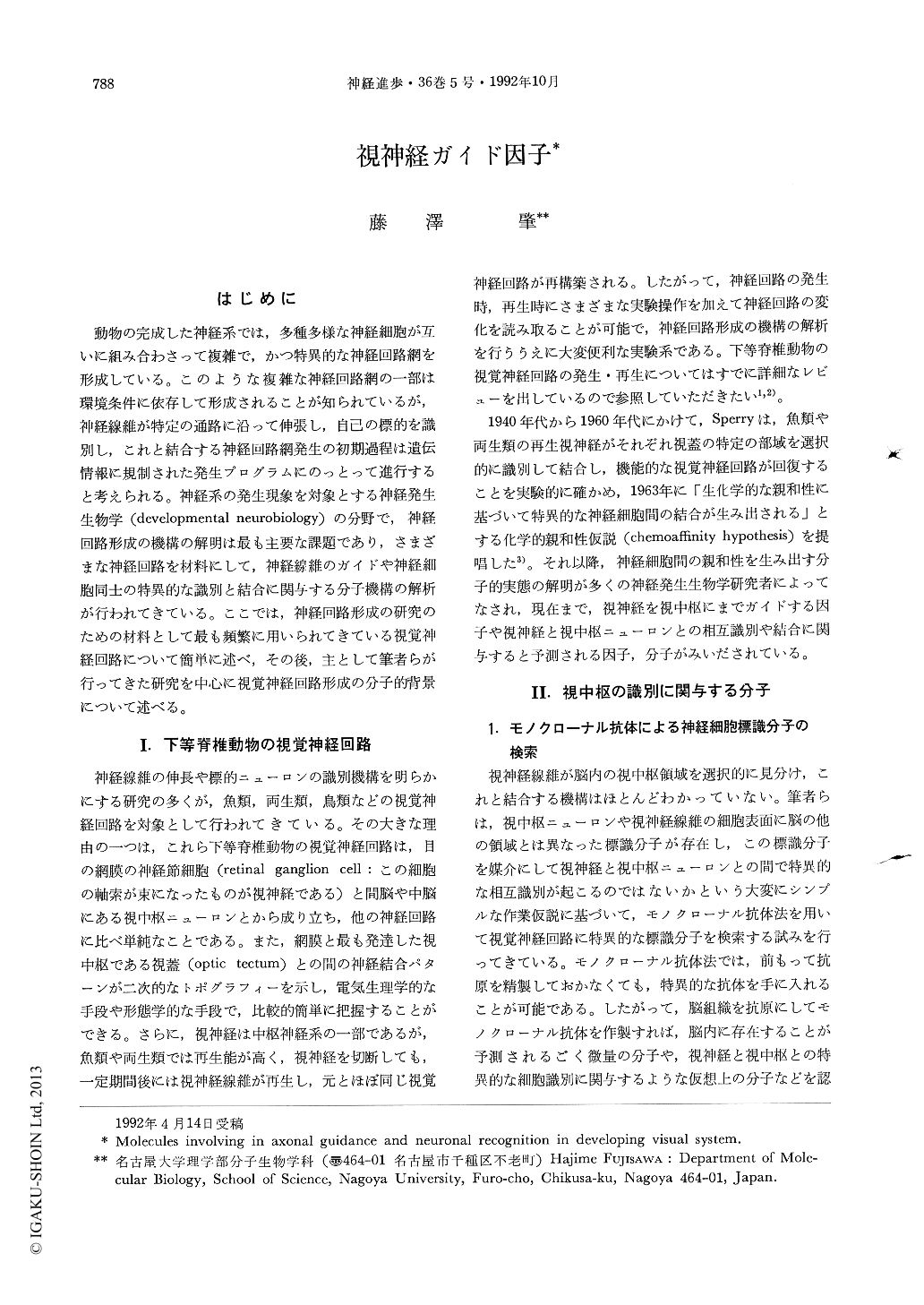Japanese
English
- 有料閲覧
- Abstract 文献概要
- 1ページ目 Look Inside
はじめに
動物の完成した神経系では,多種多様な神経細胞が互いに組み合わさって複雑で,かつ特異的な神経回路網を形成している。このような複雑な神経回路網の一部は環境条件に依存して形成されることが知られているが,神経線維が特定の通路に沿って伸張し,自己の標的を識別し,これと結合する神経回路網発生の初期過程は遺伝情報に規制された発生プログラムにのっとって進行すると考えられる。神経系の発生現象を対象とする神経発生生物学(developmental neurobiology)の分野で,神経回路形成の機構の解明は最も主要な課題であり,さまざまな神経回路を材料にして,神経線維のガイドや神経細胞同士の特異的な識別と結合に関与する分子機構の解析が行われてきている。ここでは,神経回路形成の研究のための材料として最も頻繁に用いられてきている視覚神経回路について簡単に述べ,その後,主として筆者らが行ってきた研究を中心に視覚神経回路形成の分子的背景について述べる。
The visual system in lower vertebrates such as teleost, amphibians or avians is a convenient model to study cellular and molecular mechanisms underlying axonal guidance and specific neuronal connec-tion. Here, we described a neuronal membrane protein A5 which may be involved in specific cell-cell recognition between retinal axons and ther targets (visual center neurons), in clawed frog Xenopus laevis.
We produced monoclonal antibodies against Xenopus tadpole tectum and obtained an antibody named A5 (MAb-A5), which recognized a cell surface protein (A5 protein). The A5 protein was predominantly expressed in both the visual system and the general somatic sensory system. We performed cDNA cloning, and clarified that the A5 is a novel class I membrane protein containing two different internal repeats in the extracellular segment. The first repeat bears homology to domain III of com-plement components C1r and C1s, and the second repeats is homologous to the C1 and C2 domains of coagulation factores V and VIII.

Copyright © 1992, Igaku-Shoin Ltd. All rights reserved.


